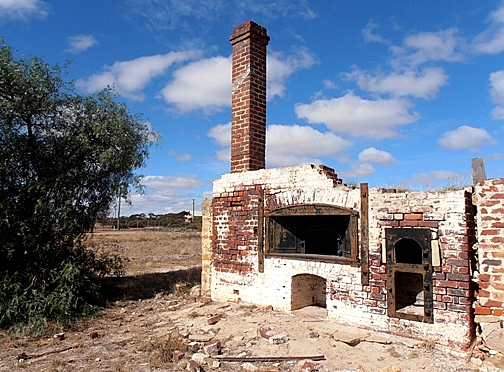Restoring Cars and Environments
Lifting the Bonnet on Wheatbelt Woodlands by Nathan McQuoid (credit: WWF)
Environmental restoration in Western Australia's wheatbelt is the subject of a fascinating book, Lifting the bonnet on Western Australia’s Ancient Woodlands, published by World Wildlife Fund-Australia. The book showcases native WA woodlands and their ecological workings as reference points for restoring degraded areas. It uses obscure locations in this vast and and complex Australian State and compares conservation of these ecosystems to restoring classic cars.
Repairing environments is a big undertaking and involves much Australian history. Beginning at the end of WWI and continuing until well after WWII, the national government established a program known as soldier settlements. The scheme offered free land to returning military people. In little inhabited and remote areas, the main requirement was that soldiers had to clear and occupy the land by planting crops in return for their ownership. Land clearing commenced over millions of acres of bushland. In Western Australia, this meant soldiers were settling in regions now called "wheatlands" for the primary crop they produced. Before clearing, the semi-arid landscape was covered by woodlands, shrubs, and sparse grasses that had survived millions of years untouched except by fires.


WA land cleaning and settlers (credit: WA Now-Then) WA's Wheatbelt map, yellow (credit: Wikipedia)
While the settlement schemes were good public policy, the unique ecological and environmental characteristics of the Wheatbelt were not appreciated. Like similar efforts in the western USA, short-grass prairies that covered much of Kansas, Oklahoma, Texas, and eastern Colorado that were converted into wheat production. This landuse conversion eventually led to the epic Dust Bowl of John Steinbeck and Woody Guthrie stories. Removing the native "bush" in Western Australia also produced unforeseen consequences. Soil salinization, land degradation by wind erosion, and farm abandonment became common. According to Australia's Commonwealth Scientific and Industrial Research Organization (CSIRO), nearly 2.5 million acres of once wooded landscapes were affected by salinization and are now abandoned.


Western Australia Soil Salinization (credit: CSIRO) Abandoned Wheatbelt farm (credit: Weekend Notes)
With this mix of history and unique ecology, the new guide to restoring WA woodlands likens the management of this complex landscape to the restoration of a classic car. Lifting the Bonnet on Wheatbelt Woodlands author Nathan McQuoid offers a practical and pragmatic approach to management and recovery of these lands by suggesting that:
“Ecosystems are essentially complex organic machines and by understanding their connections, functional elements, and processes we can keep them going, and begin to repair many from a broken-down state to a restoration success story. To restore a classic car, we need to know how the original looked and worked, as well."

1962 Utility vehicle or Ute (credit: WWF-Australia/Wikicommons)
I don't know much about iconic vehicles but I do know everyone appreciates them. Likewise, the same should be said about the unique plants and ecosystems that once covered the landscapes of Western Australia. They too could use a bit of loving attention that this land restoration guide provides.
WHB